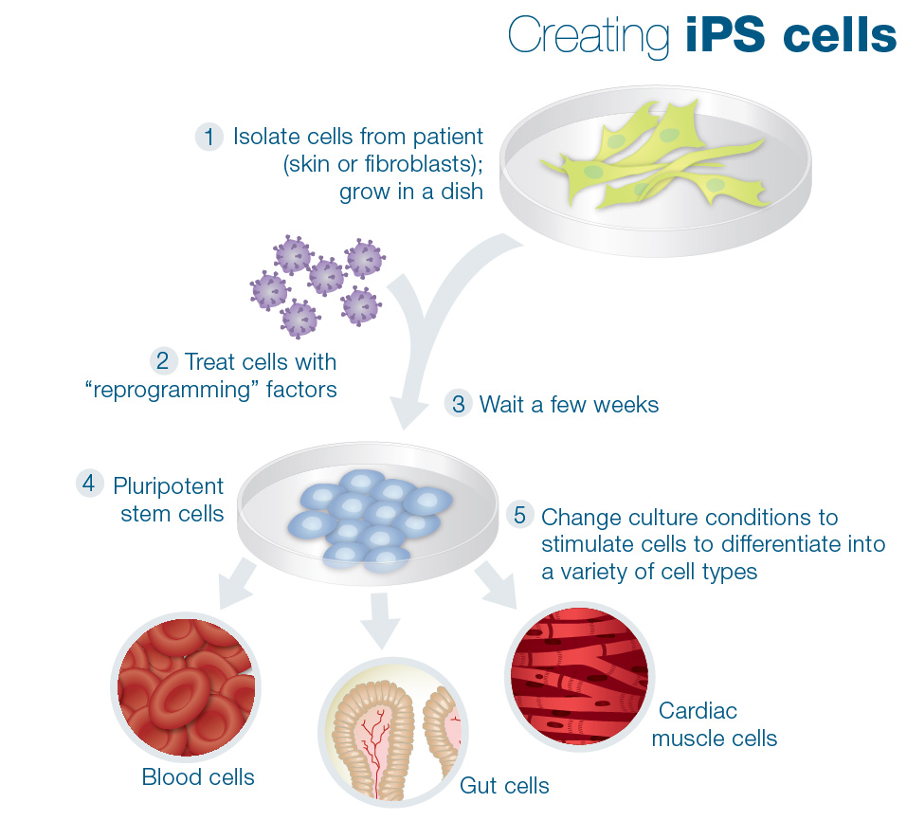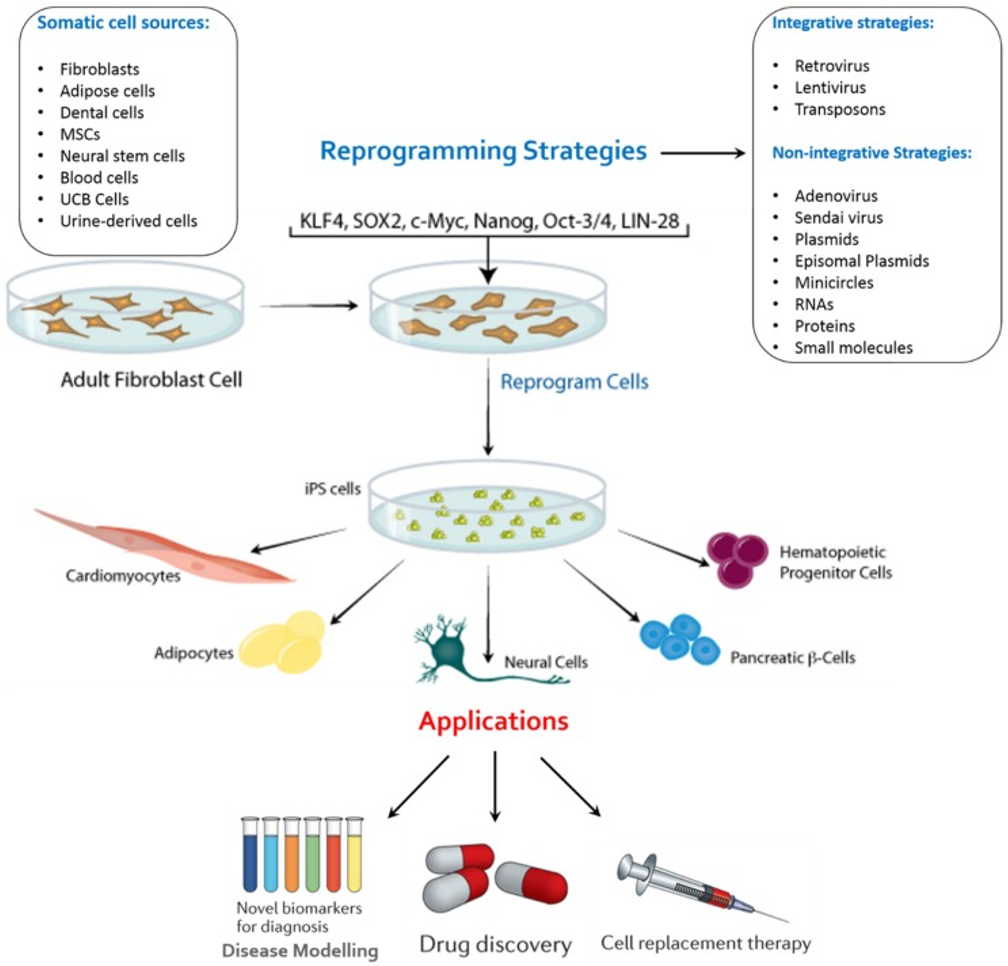Induced Pluripotent Stem Cells (iPSCs)
SC21
Induced Pluripotent stem cells
Induced Pluripotent Stem Cells (iPS) iPSCs are derived from skin or blood cells that have been reprogrammed back into an embryonic-like pluripotent state that enables the development of an unlimited source of any type of human cell needed for therapeutic purposes.
Our iPSC21 program selects skin cells as the preferred cell source for reprogramming to iPSCs due to the robust high efficacy. The skin sample can be easily collected by a 3-4mm skin punch biopsy. After isolation and growth of the fibroblasts, our scientists will perform our mRNA reprogramming protocol for the generation of induced pluripotent stem cells.

The iPSC technology was pioneered by Shinya Yamanaka’s lab in Kyoto, Japan, who showed in 2006 the introduction of four specific genes (named Myc, Oct3/4, Sox2 and Klf4) encoding transcription factors could convert somatic cells into pluripotent stem cells.
He was awarded the 2012 Nobel Prize along with Sir John Gurdon “for the discovery that mature cells can be reprogrammed to become pluripotent.”
Pluripotent stem cells are of keen interest in the field of regenerative medicine as they can propagate indefinitely, as well as give rise to every other cell type in the body (such as neurons, heart, pancreatic, and liver cells), they represent a single source of cells that could be used to replace those lost to damage or disease.

iPSCs are powerful tools applicable in biomedicine, cell therapy, pharmacology and toxicology. Therefore, the use of iPSCs in stem cell therapy has immense prospects and offer remarkable applications in regenerative medicine.
As iPSCs can differentiate to different cell types, we can generate the required cells for the study or treatment of numerous diseases and determination of drug toxicity.
BioMedical Uses of iPSCs
- Regenerative Medicine Induced Mesenchymal Stem Cells
- Gene Correction in iPSCs and Autologous Transplantation
- Modelling Cancer Pathogenesis & Drug Screening
- Cancer Immunotherapy Tumor-Specific Immune Cells
- Disease Modelling “Disease in a Petri Dish”
